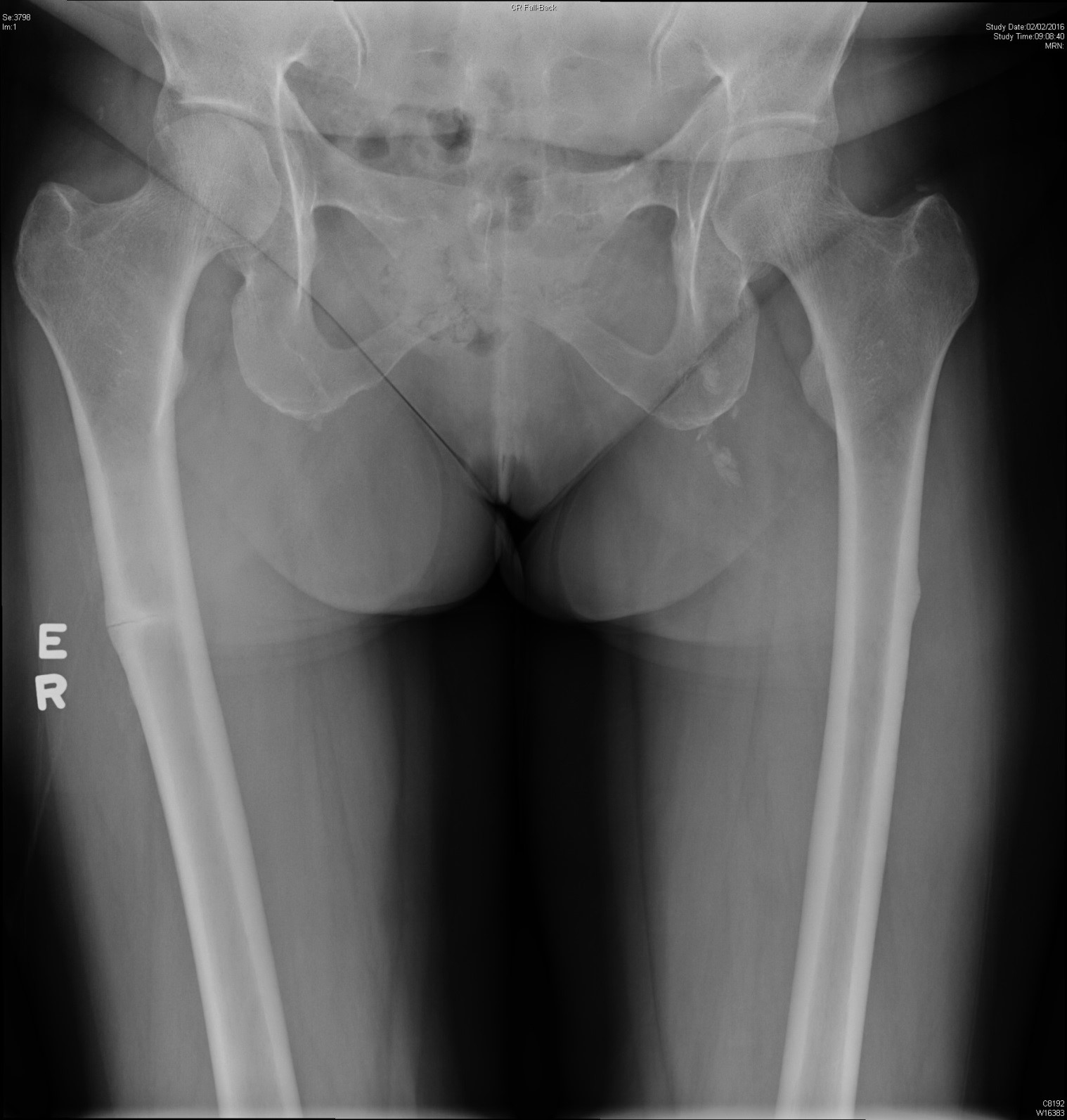Answer of November 2017
For completion of the online quiz, please visit the HKAM iCMECPD website: http://www.icmecpd.hk/
Clinical History:
59/F
Systemic lupus erythematosus on steroid and immunosuppressants; Osteopenia on Fosamax since May 2004; Complains of right thigh pain for 1 year, without obvious history of trauma
Imaging Findings:
Incomplete fracture affecting the lateral aspect of proximal right femur, with thickened cortex and beaked appearance, suggestive of atypical fracture related long term bisphosphonate usage.
Cortical thickening with beaked appearance are also noted at lateral aspect of proximal left femur.
Diagnosis:
Bisphosphonate related proximal femoral fracture.
Discussion:
Bisphosphonate related proximal femoral fracture is a rare complication of chronic (median treatment seven years) bisphosphonate therapy.
Bisphosphonates inhibit bone resorption by suppressing osteoclast activity. Although clinical trial data clearly support the beneficial effect of bisphosphonates on the prevention of osteoporotic fracture, there is theoretical concern that prolonged therapy can lead to oversuppression of bone turnover ("frozen bone") and increased skeletal fragility.
Bisphosphonate related proximal femoral fracture starts with cortical thickening at lateral cortex, followed by incomplete fracture. Eventually, complete fracture occurs, which is typically transverse, sometimes oblique (<30 degree), and can have a “beaked” appearance.
There is increased tracer uptake in lateral proximal femur on Tc-99m bone scan.
Bisphosphonates should be discontinued and adequate calcium and vitamin D supplementation prescribed for patients with bisphosphonate related proximal femoral fracture. Orthopedic intervention is necessary for patients with complete fractures and for those with incomplete fractures accompanied by significant pain.
